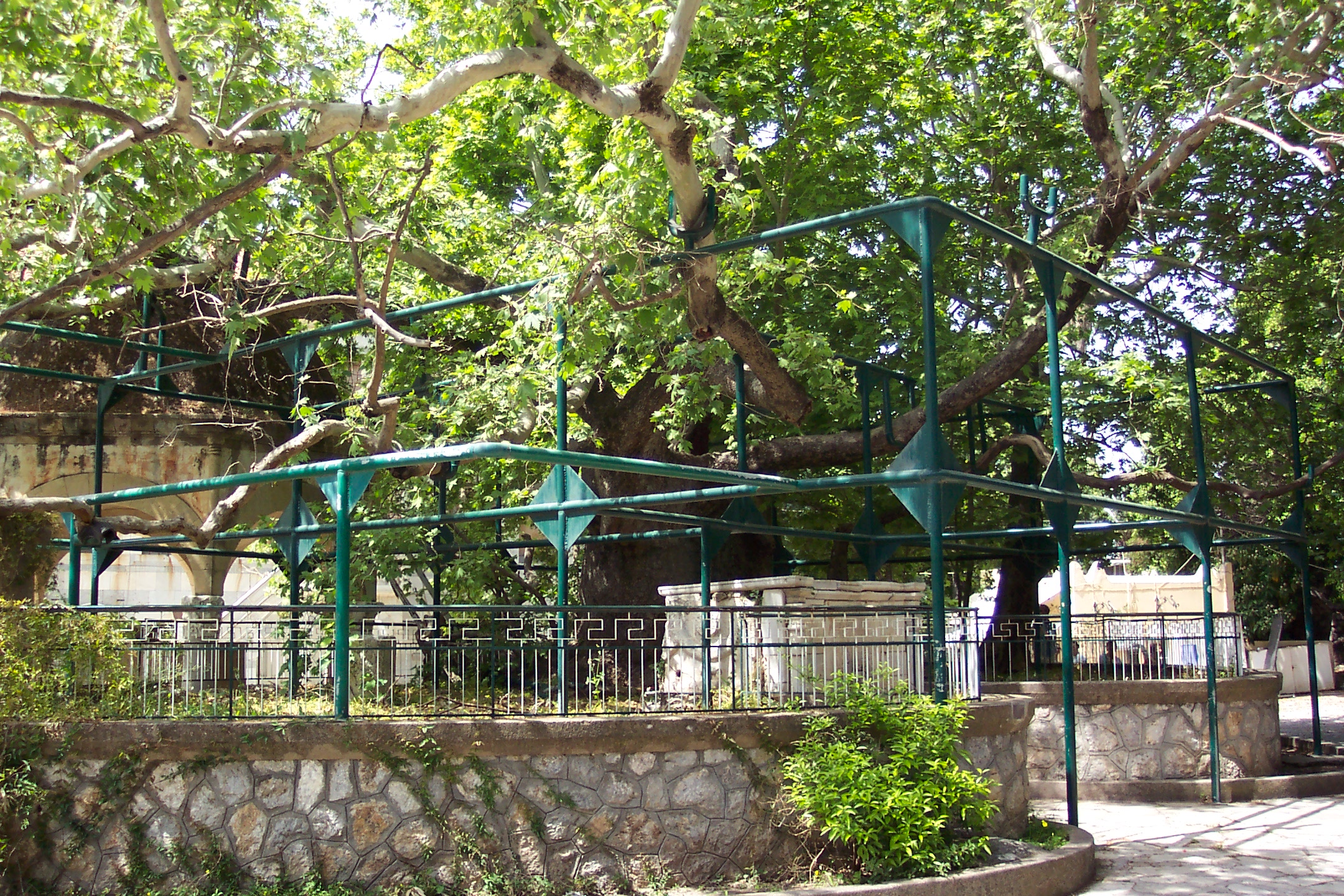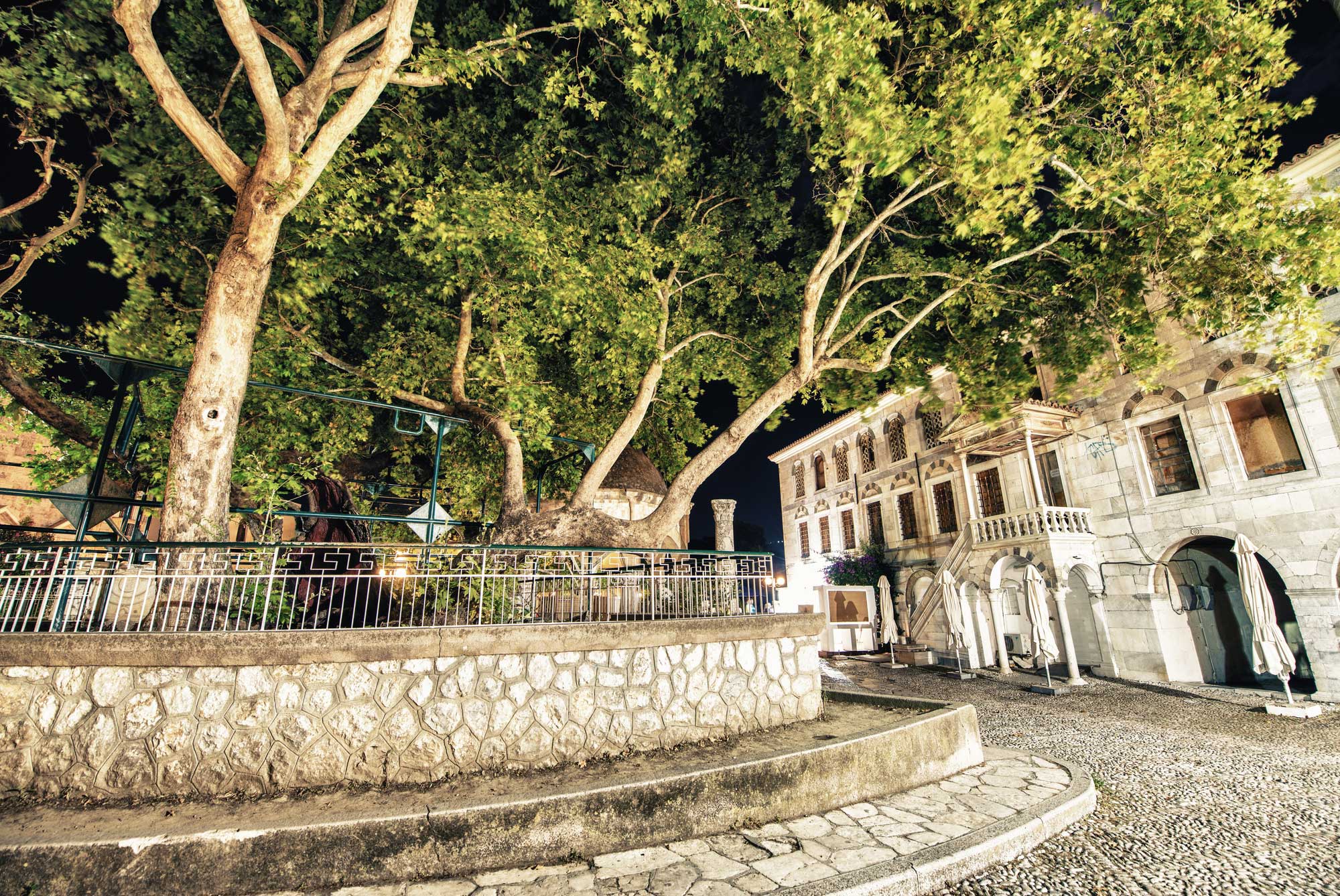Tree of Hippocrates: Preserving the Legend
The Tree of Hippocrates on Kos, which is a listed monument of nature since 1985, is a Platanus orientalis (Oriental plane tree) and one of the island’s capital most cherished natural monuments.
The natural gem on Platía Platanou must be preserved
Preserving the legendary Tree of Hippocrates is a constant struggle. The massive plant you see today is about 500 years old and supposedly a descendant of the original tree that stood here in the time of the father of modern medicine.
An impressive sight, with a 12 meters diameter trunk, the Tree of Hippocrates is the largest platane in Europe. Insects and fungi damaged the tree, and the hollow shaft can no longer support the weight of the branches. An effort to preserve the tree has been made by local authorities – this is why you can see the metal enclosure around the natural monument. However, it is not enough.

81-year-old phytopathologist Tetsuya Okada from Japan, a lover of Greek culture, history, and lifestyle, is an expert on the treatment of plants and he will help local authorities to preserve the legendary tree.
According to Okada and other experts, in its current condition, the Tree of Hippocrates will die in about 25 years. However, with proper treatment, like unloading the roots from unnecessary weight, the platane could survive for hundreds of years. To this scope, Okada submitted a treatment proposal with the Ministry of Rural Development last year. His plan is still pending approval.
This is good news for the Tree of Hippocrates, which is one of Kos’s most beloved symbols. After all, the tree stands where Hippocrates once taught his students. Even apostle Paul of Tarsus taught here. Preserving monuments that mark the history of the island is how the locals cherish and honor their past.

